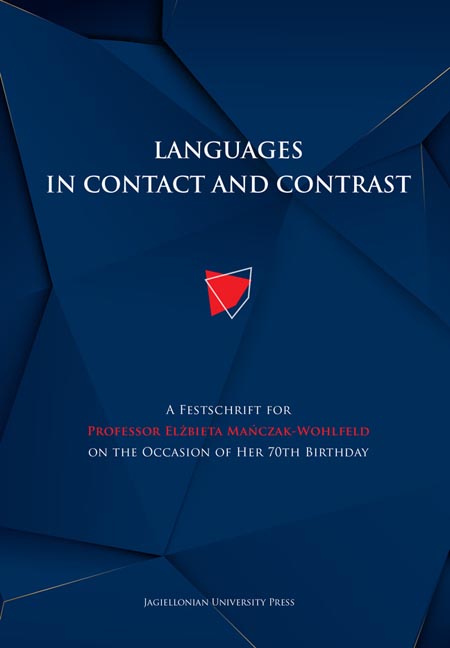 Languages in Contact and Contrast
Languages in Contact and Contrast Published online by Cambridge University Press: 14 October 2023
Introduction
The present article attempts to identify the main phonetic adaptation strategies applied when importing English vocabulary into Slovak on the basis of data gathered from an online dictionary of foreign lexical items used in this language (SCS). A similar topic has recently been undertaken in relation to Czech and Polish by Molęda (2011). He proposes a set of hypothetical adaptation processes that are expected to apply in the two languages on phonetic grounds (i.e., when the influence of spelling may be factored out). His hypotheses are then tested on the basis of lexical material collected from dictionaries of foreignisms in Czech and Polish and pronunciation surveys conducted among native speakers of these languages. The results from both studies are consistent and clearly point to a strong tendency on the part of his subjects for spelling- rather than pronunciation-based adaptations.
The present paper does not aim to achieve the same kind of depth, as this is impossible within the limits of a single article. Instead, its goal is to prepare the ground for further investigation into Slovak anglicisms, especially one aided by a degree of automatization provided by soundcorrs (Stachowski 2020).
English: British or American?
There are a few good reasons to treat Standard British English (henceforth BrE), traditionally identified with Received Pronunciation, as a primary reference point in discussing phonetic adaptation of English words in Standard Slovak (henceforth Slk).
English as a foreign language (EFL) has been gradually gaining ground in Slovak education since the early 1990s and is nowadays a compulsory subject from the 3rd grade onwards (Ciprianova et al. 2017: 52–53). A prominent role in this process, especially in its early stages, was played by British Council agencies in Slovakia which offered courses taught by native speakers of BrE based on British teaching materials and coursebooks (see Prendergast 2008: 65ff for anecdotal evidence). Furthermore, the usual accent of choice in EFL instruction in Slovak schools has also been BrE (Ciprianova et al. 2017: 54).
In view of the above, BrE is treated as the primary model to which the reflexes in Slk will be compared in this article.
To save this book to your Kindle, first ensure [email protected] is added to your Approved Personal Document E-mail List under your Personal Document Settings on the Manage Your Content and Devices page of your Amazon account. Then enter the ‘name’ part of your Kindle email address below. Find out more about saving to your Kindle.
Note you can select to save to either the @free.kindle.com or @kindle.com variations. ‘@free.kindle.com’ emails are free but can only be saved to your device when it is connected to wi-fi. ‘@kindle.com’ emails can be delivered even when you are not connected to wi-fi, but note that service fees apply.
Find out more about the Kindle Personal Document Service.
To save content items to your account, please confirm that you agree to abide by our usage policies. If this is the first time you use this feature, you will be asked to authorise Cambridge Core to connect with your account. Find out more about saving content to Dropbox.
To save content items to your account, please confirm that you agree to abide by our usage policies. If this is the first time you use this feature, you will be asked to authorise Cambridge Core to connect with your account. Find out more about saving content to Google Drive.